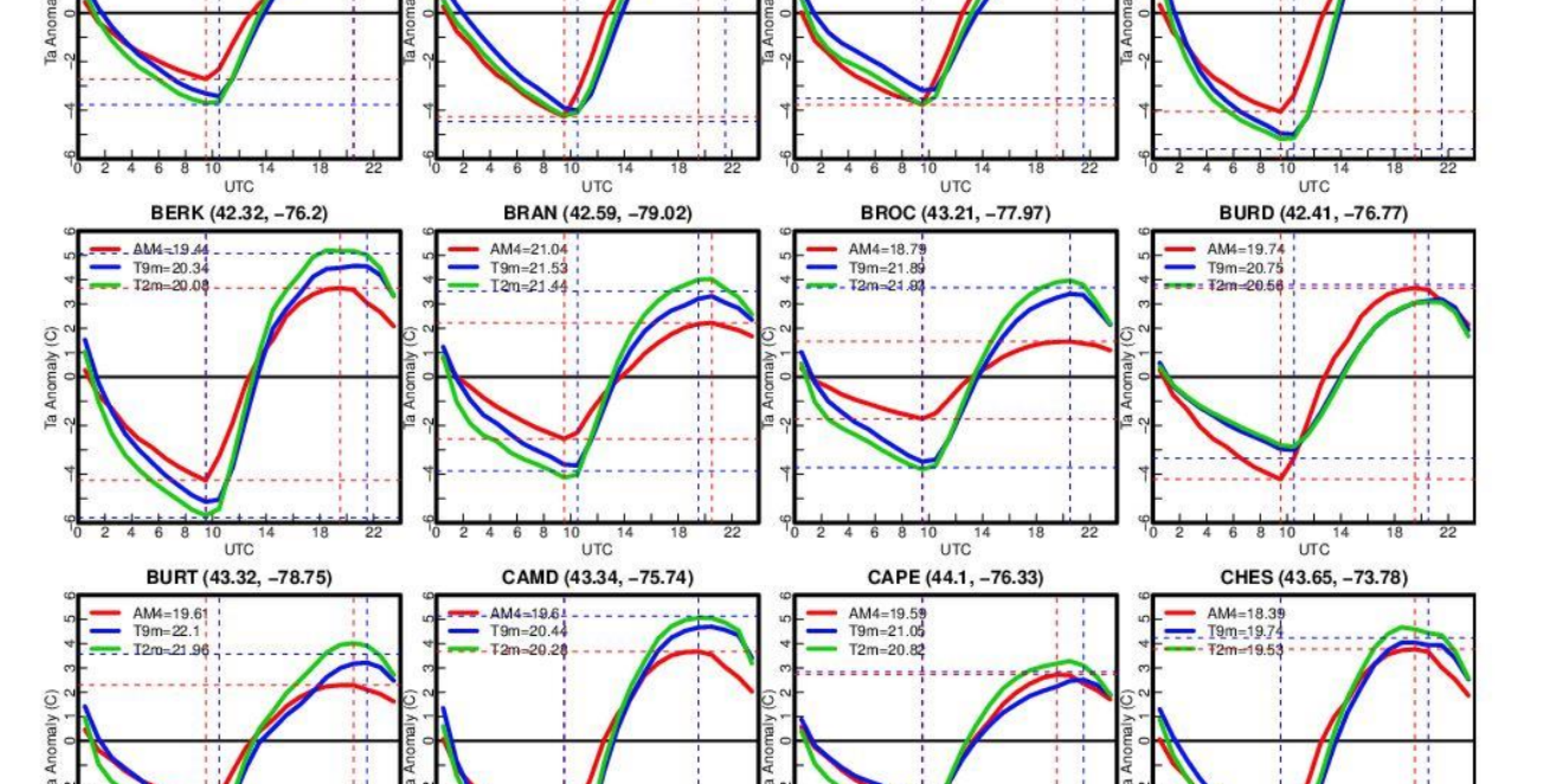The observed mean diurnal cycle of surface air temperatures at 2m (green) and 9m (blue) above the ground during July of 2016 and 2017 at 12 New York Mesonet stations, compared with the GFDL AM4 model simulated multi-year mean 2m air temperature (red) for the grid box containing the station. The daily mean value is shown in the line legend.
In today’s changing world, it’s imperative that realistic prediction models are produced to provide confidence in future climate projections and predictions for days to seasons. In an effort to accelerate the development of increasingly realistic models, NOAA’s MAPP Model Diagnostics Task Force (MDTF) has developed a new approach centered on greater incorporation of process-oriented diagnostics (PODs) that can be applied during the model development process and repeatedly applied with several model versions as a benchmark for model improvement. As described in a paper by Eric Maloney and co-authors involved in the MDTF, PODs are effective means to characterize environmental processes and behaviors related to the ability of a model to simulate an observed phenomenon underpinning predictions and projections. In the paper, various PODs developed by the MDTF are summarized with plans to expand, refine, and increase the utility of the underpinning software framework. The MAPP MDTF has been developing PODs and promoting their practical application in models including those used by NOAA GFDL for climate predictions and projections. MDTF PODs and their overall framework has the potential to accelerate the development of NOAA models.
This study was supported by the Modeling, Analysis, Predictions and Projections (MAPP) Program as part of its Model Diagnostics Task Force activities.
Read the paper here
—————————————————————-
About MAPP
The Modeling, Analysis, Predictions, and Projections (MAPP) Program is a competitive research program in NOAA Research’s Climate Program Office. MAPP’s mission is to enhance the Nation’s and NOAA’s capability to understand, predict, and project variability and long-term changes in Earth’s system and mitigate human and economic impacts. To achieve its mission, MAPP supports foundational research, transition of research to applications, and engagement across other parts of NOAA, among partner agencies, and with the external research community. MAPP plays a crucial role in enabling national preparedness for extreme events like drought and longer-term climate changes. For more information, please visit www.cpo.noaa.gov/MAPP.
View More MAPP News.



